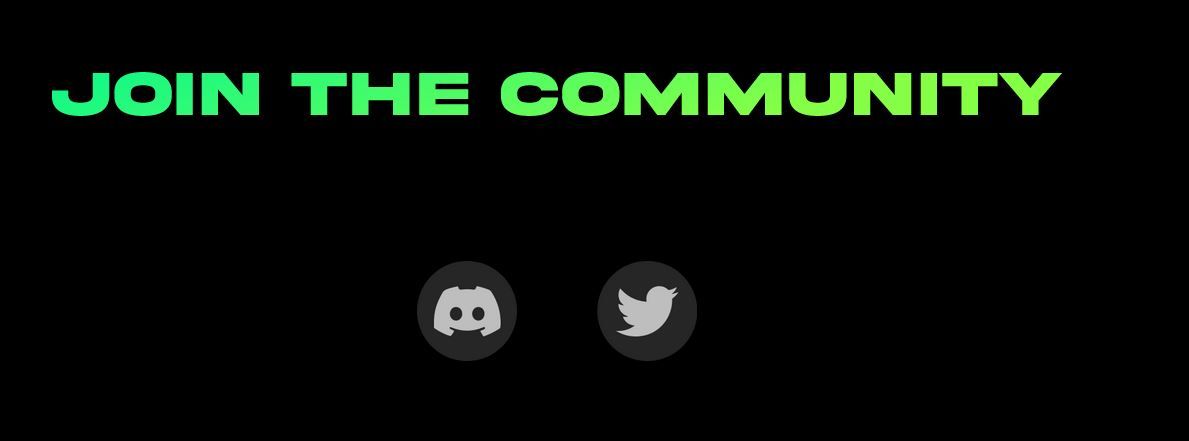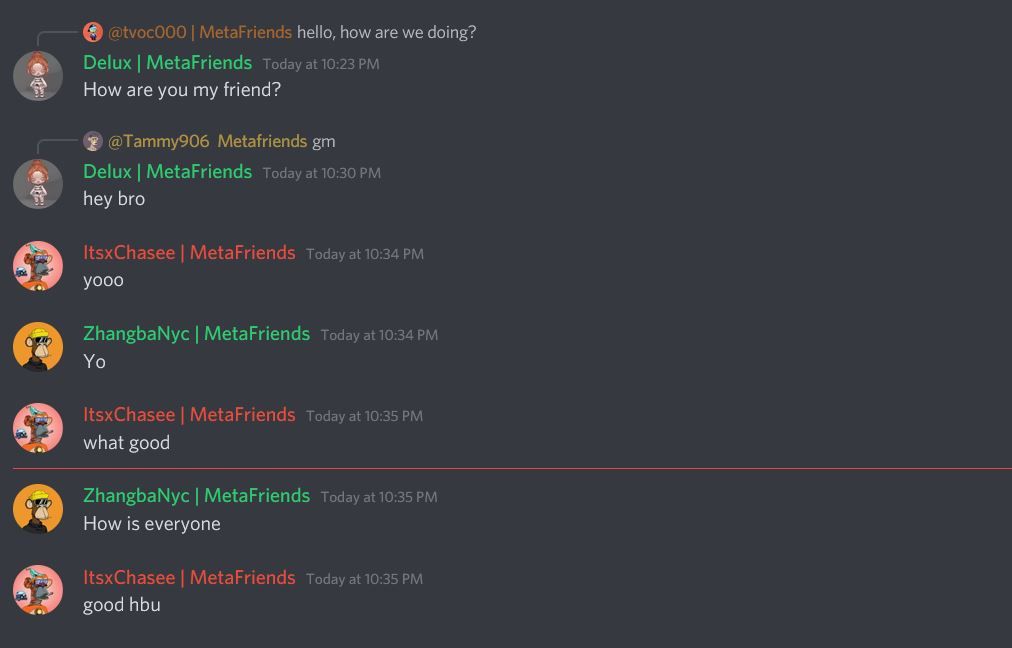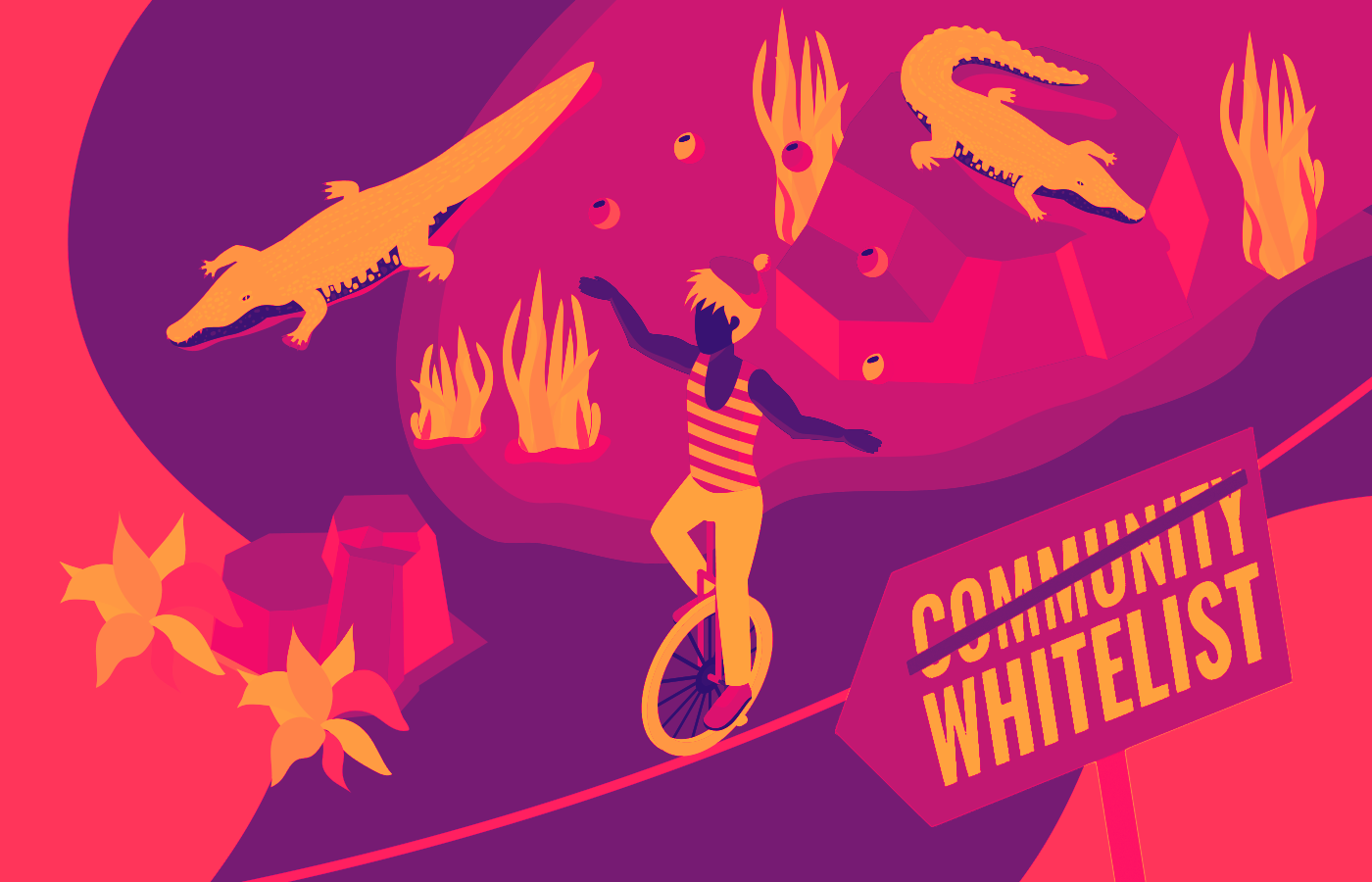Chances are that lately (at time of writing, anyway), if you come across an NFT project, you’ll find that they have a whitelist. It’s part of the hype-generating machine that are most NFT pfp projects. It’s not enough to just join the Discord server or follow the Twitter account — now you have to jump through more than a few hoops in order to be a part of the “community”.

This video that went viral on Twitter pretty much sums it up: whitelisting has become basically yet another grind in hopes of making it big.
But it wasn’t always like this. How the hell did we get here?
What are Whitelists?
NFT whitelisting, for those not in the know, is the process of getting a crypto wallet address pre-approved for a future mint of a given NFT project. Whitelisting was originally meant to reward early supporters of the project and prevent “gas wars” in which multiple people mint their NFTs at the same time and drive up gas fees.
This avoidance of gas fees is also why you tend to see promotions of whitelisting from projects based on Ethereum, due to the chronically high gas fees. Whitelisting isn’t done as often on other blockchains.
The process of getting whitelisted starts with the basics of following the Twitter account and joining the Discord. More steps may follow, which may include but are not limited to:
- Inviting others to join the Discord
- Retweeting, commenting on or tagging friends in a tweet
- Entering a lottery to join the whitelist
Pretty straightforward, right?
But many projects want more from their whitelisters. In some cases, I’d say it’s gotten out of hand. Like a lot of things, whitelisting started with good intentions, but has been corrupted by the worst human beings — marketers — and now threatens to ruin it for everyone.
Will Work for Whitelisting
In addition to the proliferation of dART and pfp projects, whitelisting contests and giveaways prior to launch are all over the place. Take any given large-scale NFT project, and you’ll find much of the same: recent join date, lots of spammy promo posts, and giveaway announcements.
Take the example of MetaFriends, a pfp project that launched February 10: since the creation of the Twitter account in December, the project has already amassed nearly 27k followers and over 45,000 in the Discord Server. That’s a lot for such a short time, right?
On the surface, MetaFriends’ whitelisting activities are pretty run-of-the-mill, regularly announcing giveaways that require entrants to follow, RT and tag a few friends, and join the Discord.

But sometimes they’ve changed it up: entrants had to solve a crossword puzzle in one giveaway, and in another they could submit fan art, which makes the whitelisting process at least a little bit more fun.
However, to whitelist to mint a Meta Friend takes a little more work once you join the Discord: you have to send 20 invites and reach Discord level 10 (so you’d need to post in the chat pretty frequently), in addition to changing your server name and proving that you’ve done it all.

A peek at the general chat in the MetaFriends Discord reveals riveting discourse consisting of gms, how are you’s, and questions about the whitelisting process. They’re really doing some meaningful community-building here.

Like many of these types of projects, MetaFriends doesn’t disclose who’s behind the project, so you’re putting your trust in a bunch of unknowns. There’s also this overemphasis on “community” – which honestly I have no idea what that means anymore, the word is used so much with next to no substance behind it.
Now don’t get it twisted — this isn’t meant to call out MetaFriends specifically. Literally hundreds of NFT projects work like this: just take a look at the Twitter feeds of See Do NFT, MegaPark, and Bored Doge Club for other, slightly different varieties of whitelist promotion.
As our very own Redlioneye.eth pointed out in a Twitter thread last week, this sort of whitelisting activity — retweeting, following, tagging, messaging and chatting in the Discord server — serves as marketing and promotion, artificially inflating interest in a given project. Thus whitelist wannabes end up doing some of the dirty work for the project managers.

Is whitelisting here to stay?
Given the current state of the internet, it’s not hard to see why whitelisting has gained traction in the NFT space. After all, while most of us here in crypto wax poetic about a Web 3 world, we still have to abide by Web 2 rules — which entails constantly churning out content and shamelessly soliciting engagement in hopes of attracting users’ increasingly scarce attention. And for many projects (original or derivative), it seems the adoption of whitelisting is helping them get noticed.
While the whitelisting process has evolved from one purpose (avoiding gas fees) to another (promotion), the core of the strategy has remained the same: entice people to get in early so that there’s more buy-in as the project launches. This remains pretty unique to the NFT space, where investors obsessed with making it bet their coin on a project well before it even launches, or without even knowing who’s behind it.
Some of us, myself included, aren’t into that, and the pace of the NFT hype machine is downright exhausting. Whitelisting just makes it even more so. Before wasting your time trying to get onto a whitelist for an NFT project, take some time to look around — there’s a lot of junk to sift through, and a gold mine isn’t going to fall into your lap just because you put so much work into promoting it (that’s called the sunk cost fallacy).
Projects with real value aren’t being constantly churned out. The next project to go to the moon won’t be manufactured, it’ll be discovered. Whitelist or no whitelist.


